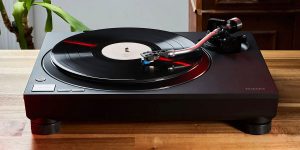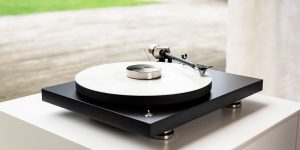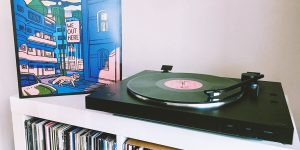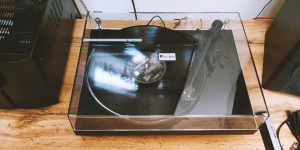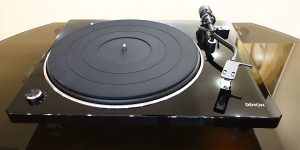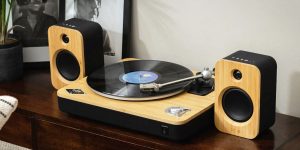Since fully manual turntables require experience, automatic ones are too easy for many users who want to embrace the vinyl tradition. So, how do you find the “golden mean”? There is a way out. Modern semi-automatic vinyl turntables are, in most cases, the optimal choice.
Such machines are convenient because they raise the tonearm after the record is finished so that the needle does not damage the record by idling. An inexperienced user does not damage the needle or the record. This review of the best semi-automatic turntables will help you decide which one to choose, as I have collected representatives of different price categories.
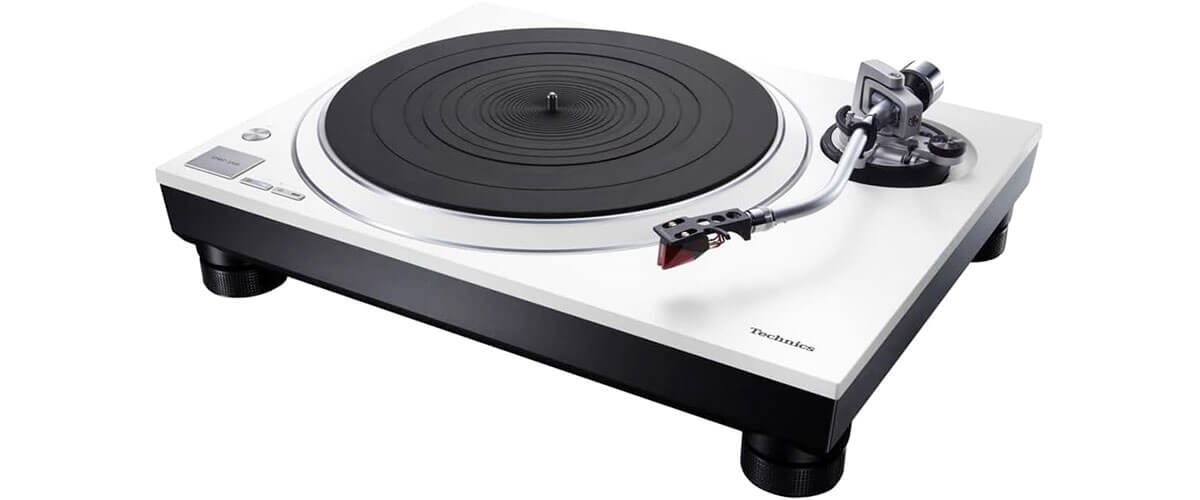
Turntables with preamp comparison table
| Name | Drive type | Operation type | Speeds | Phono Pre-Amp | Bluetooth | Review |
|---|---|---|---|---|---|---|
| Technics SL-1500C best overall | direct | semi-automatic | 33 1/3, 45, 78 RPM | yes | no | Review |
| Music Hall Classic also great | belt | semi-automatic | 33 1/3, 45 RPM | yes | no | Review |
| Denon DP-400 also great | belt | semi-automatic | 33 1/3, 45, 78 RPM | yes | no | Review |
Best semi-automatic turntable reviews
Technics SL-1500C – best overall
This Technics SL-1500C review features a premium model from the brand's lineup that combines classic traditions with modern improvements. The vinyl turntable has semi-automatic control, a direct-drive motor, and a built-in preamplifier for a more stable spin. It's representative of the mid-range segment, bordering on premium. But you won't need the extra investment unless you decide to improve the already excellent sound over time.Design
 The design is attractive and available in two colors (matte black and silver). But as I often say, weight is more important than looks. The SL-1500C turntable weighs 21.2 pounds. The diecast aluminum platter is also quite heavy at 4.5 pounds. Combined with the adjustable legs, this gives good anti-vibration stability. I even jumped next to the turntable, but the needle stayed in place. The coreless direct drive motor was borrowed from the SL-1200 and premium SL-1000R moguls, as it has proven to be excellent, showing a quiet, stable operation. It holds speed very well, and noise reduction is represented by springs and rubber.
Among the notable things I can mention is a highly sensitive S-shaped tonearm. This shape is considered optimal, as it helps the needle to get into the grooves clearly and, consequently, to capture the sound more clearly. Controls are push-button: start/stop and speed. In general, this turntable can be recommended even for an inexperienced user; it will have no problems, including its functionality.
The design is attractive and available in two colors (matte black and silver). But as I often say, weight is more important than looks. The SL-1500C turntable weighs 21.2 pounds. The diecast aluminum platter is also quite heavy at 4.5 pounds. Combined with the adjustable legs, this gives good anti-vibration stability. I even jumped next to the turntable, but the needle stayed in place. The coreless direct drive motor was borrowed from the SL-1200 and premium SL-1000R moguls, as it has proven to be excellent, showing a quiet, stable operation. It holds speed very well, and noise reduction is represented by springs and rubber.
Among the notable things I can mention is a highly sensitive S-shaped tonearm. This shape is considered optimal, as it helps the needle to get into the grooves clearly and, consequently, to capture the sound more clearly. Controls are push-button: start/stop and speed. In general, this turntable can be recommended even for an inexperienced user; it will have no problems, including its functionality.
Features
Since the record player is semi-automatic, this means tonearm autolifting. Another aspect is designed to serve the inexperienced user or just to make life easier for even the experienced. Simply, when the track ends and you're not near the turntable, the needle keeps moving across the record, scratching it. That said, you have to set the needle manually - a tribute to the tradition of vinyl. As for the needle itself, the pre-installed Ortofon 2MRed cartridge is very good. It is often chosen as a replacement for lower quality ones because it combines cool characteristics and acceptable prices. That said, on the Ortofon website, you can choose to replace it with an even cooler cartridge (up to $1000) if you want to or when this one wears out. Also, the tonearm setup was not a problem; I'm sure any user can handle it. The Technics SL-1500C has three spin speeds (33 1/3, 45, and 78 RPM). I like not having to select certain records for my collection. A torque of 1.8 kg・cm accelerates a record (33 1/3) in 0.7 seconds. It's a tribute to the direct drive that DJs love so much, but this model is intended for home use as it doesn't have the right controls.Sound
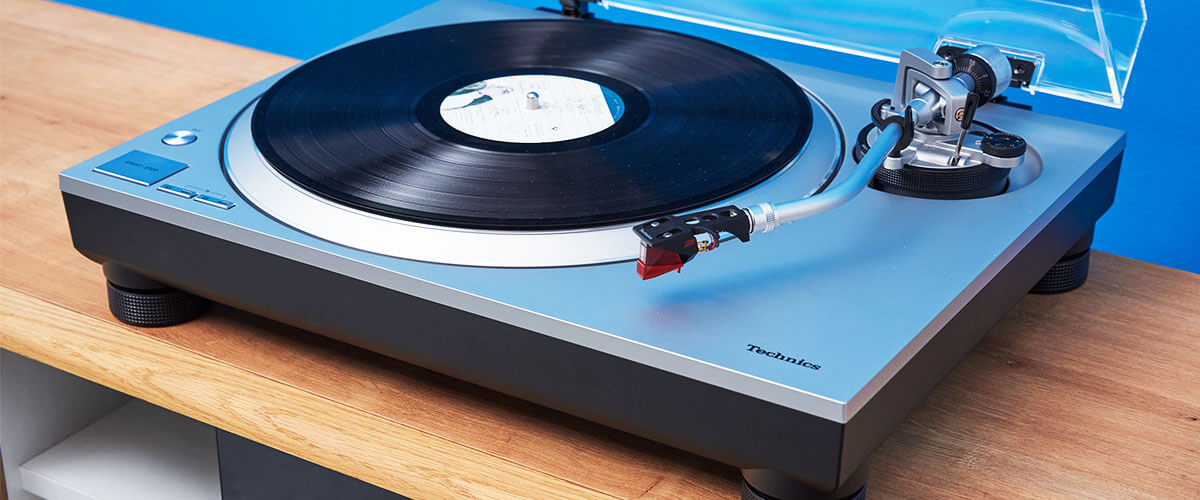 The Technics SL-1500C sounds great right out of the box. It keeps the sustain and speed of the record spinning for a very long time, and I didn't notice any slowdown in the middle of a track, as is often the case with cheap belt turntables.
I really liked the built-in phono stage (Wow And Flutter 0.025% W.R.M.S.), although I don't always recommend using an external one because even then, you'll get more out of it than with the built-in.
The soundstage is wide, with very rich bass and great midrange, and the treble doesn't ring out. The cartridge is very accurate; it doesn't lose detail during playback. When I connected an external preamp and replaced the cartridge with a more expensive one from Ortofon, I realized that too much difference for most listeners; such a replacement would not make a noticeable difference. But I could hear it, so I turned on my favorite Nevermind album and sang along to Kurt, enjoying the sound of SL-1500C.
The Technics SL-1500C sounds great right out of the box. It keeps the sustain and speed of the record spinning for a very long time, and I didn't notice any slowdown in the middle of a track, as is often the case with cheap belt turntables.
I really liked the built-in phono stage (Wow And Flutter 0.025% W.R.M.S.), although I don't always recommend using an external one because even then, you'll get more out of it than with the built-in.
The soundstage is wide, with very rich bass and great midrange, and the treble doesn't ring out. The cartridge is very accurate; it doesn't lose detail during playback. When I connected an external preamp and replaced the cartridge with a more expensive one from Ortofon, I realized that too much difference for most listeners; such a replacement would not make a noticeable difference. But I could hear it, so I turned on my favorite Nevermind album and sang along to Kurt, enjoying the sound of SL-1500C.
Key specs
- Drive type: direct.
- Operation type: semi-automatic.
- Speeds, RPM: 33 1/3, 45, 78.
- Phono Pre-Amp: yes.
- Speakers: no.
- Bluetooth: no.
- USB: no.
- Aux input: no.
I often mention this model in my reviews, as the brand has established itself since 1960 as one of the most professional. The Technics SL-1500C turntable is not cheap; it’s in the mid-range segment approaching premium, but it’s worth every penny folded. Among the striking features of a serious approach to vinyl is an S-shaped tonearm with an Ortofon 2M Red cartridge. In addition, you get three record speeds, which you switch with buttons, a direct drive motor, and a built-in phono stage.
The Technics SL-1500C sounds wonderful, and in my opinion, it is by far the best semi-automatic turntable in my review. All notes are crisp clean, with an incredible balance of frequencies. But most importantly, it is fuller and richer.
Music Hall Classic – also great
The middle price segment is the most popular among users. After all, you can find vinyl turntable models here for every taste. In this Music Hall Classic review, I will tell you about a turntable from this category (up to $1000) with a built-in preamp and belt-drive motor, which will not require additional initial investments. Still, in the future, it can be upgraded, thus improving the overall sound. The company has been in the music equipment business since 1998, so they know a thing or two about detail.Design
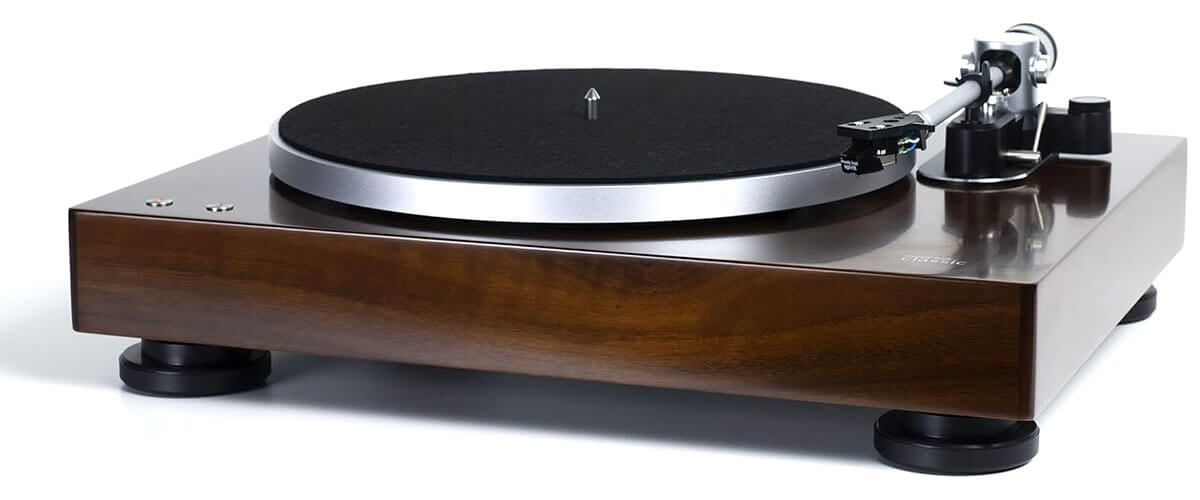 The chassis of this record player, made of MDF with a wood finish, looks very classic. It's like my father took his '60s record player out of the closet. I love this retro style; it gives my understanding of vinyl a charm. The weight of the plinth is pretty good at 15.2 pounds, and it handles external vibrations well. The feet are adjustable, thus leveling the Music Hall Classic even on a surface that is not too flat. Even the lid is made of good plastic (which is rare), and I don't feel like it could burst from awkward movement. Even the felt mat fits pretty well on the aluminum platter, but I still recommend the rubber one.
Only 2 power/33 and 45 buttons are on the top panel. This means you can turn on the turntable itself and switch speeds. However, since the buttons are mounted flush with the surface of the chassis, after a couple of days of testing, I realized that I pawed this place with my fingers.
The tonearm here is straight, which is typical for the middle segment. This shape is considered the simplest and not the most accurate. And it seemed rather flimsy to me. But I easily adjusted it parallel to the record and got a good playback without repeated adjustments.
The chassis of this record player, made of MDF with a wood finish, looks very classic. It's like my father took his '60s record player out of the closet. I love this retro style; it gives my understanding of vinyl a charm. The weight of the plinth is pretty good at 15.2 pounds, and it handles external vibrations well. The feet are adjustable, thus leveling the Music Hall Classic even on a surface that is not too flat. Even the lid is made of good plastic (which is rare), and I don't feel like it could burst from awkward movement. Even the felt mat fits pretty well on the aluminum platter, but I still recommend the rubber one.
Only 2 power/33 and 45 buttons are on the top panel. This means you can turn on the turntable itself and switch speeds. However, since the buttons are mounted flush with the surface of the chassis, after a couple of days of testing, I realized that I pawed this place with my fingers.
The tonearm here is straight, which is typical for the middle segment. This shape is considered the simplest and not the most accurate. And it seemed rather flimsy to me. But I easily adjusted it parallel to the record and got a good playback without repeated adjustments.
Features
The belt drive motor is indeed quite quiet, but the speed is not as stable as in more expensive turntables. According to the company's statement, some fluctuations in work speed are within the acceptable limits of the middle segment. I am not inclined to disagree with the brand's representatives because the Music Hall turntable showed good performance among many similar models. And the nuances will not be heard by most users. Anyway, belt drive is a classic option for damping vibrations when it comes to analog sound. As for the functionality of the vinyl turntable in question, it is semi-automatic. There is no auto-return function here; the tonearm simply lifts after the record is finished. But this is a good feature for inexperienced users who do not know how to follow the work of the needle. If you are a fan of falling asleep to music, this function is very useful because the turntable turns off when the record is finished (the record stops spinning). Music Hall Classic has only 2 rotation speeds (33 1/3 and 45), but this is normal for the middle segment. And since the company manufactures turntable accessories, the built-in cartridge is also from Music Hall. It can be replaced when it breaks. I easily installed Ortofon on it, but the selection is limited to carts under $100. So I couldn't improve the sound too much in this area.Sound
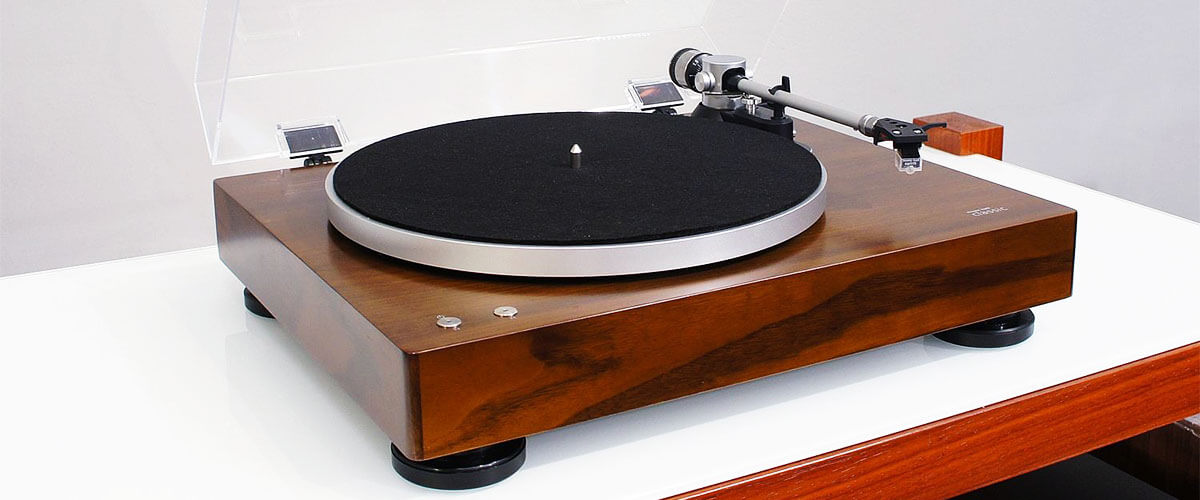 The Music Hall Classic produces a fairly clean, stable sound with the built-in phono stage. I really liked how it retained its warmth, dynamics, and brightness with David Miles' Miles in the Sky. The trumpet sounds confident, and the orchestra in the background, although muted, you can hear each instrument clearly. Not many players can cope with jazz, losing details. In this case, even with shelf speakers, the sound was rich.
No, of course, it does not mean that we found something in the middle segment that can overwhelm the sound of premium turntables. Even the external preamplifier reveals a wider range of colors in our model. But I would set Music Hall apart from the competition.
The Music Hall Classic produces a fairly clean, stable sound with the built-in phono stage. I really liked how it retained its warmth, dynamics, and brightness with David Miles' Miles in the Sky. The trumpet sounds confident, and the orchestra in the background, although muted, you can hear each instrument clearly. Not many players can cope with jazz, losing details. In this case, even with shelf speakers, the sound was rich.
No, of course, it does not mean that we found something in the middle segment that can overwhelm the sound of premium turntables. Even the external preamplifier reveals a wider range of colors in our model. But I would set Music Hall apart from the competition.
Key specs
- Drive type: belt.
- Operation type: semi-automatic.
- Speeds, RPM: 33 1/3, 45.
- Phono Pre-Amp: yes.
- Speakers: no.
- Bluetooth: no.
- USB: no.
- Aux input: no.
This semi-auto turntable costs almost half as much as the Technics SL-1500C and has only 2 spin speeds. Also, the straight cartridge is considered the most inaccurate for extracting sound from the record’s grooves, but most manufacturers use it. In this case, we are more interested in the Music Hall Spirit cartridge, which, in practice, is inferior to the Ortofon 2M Red. Good weight and heavy wooden chassis (MDF) provide good anti-resonance. Well, from the automatic functions, it has auto-lifting. Moreover, your record will stop. You can switch speeds with two buttons rather than manually changing the belt.
As for the sound, the Music Hall Classic captures the colorfulness of any genre very well, with a good level of clarity and brightness. I also believe that the materials used will last the user a long time. You also don’t have to buy an external preamplifier if you don’t want to (there is one built-in).
Denon DP-400 – under $500
If you dream of a budget turntable with good potential, then the semi-automatic Denon DP-400 review will be useful. I'd like to point out right off the bat that this record player looks unusual because of the design of the dust cover, and it does not look cheap. But it is this detail that makes many people itch. DP-400 represents the price category up to $500, which can be upgraded to a very high level. After all, Denon has been in the music equipment business for a very long time and knows what is essential for great sound. But all of this requires explanation, folks, so it's time to get down to the details.Design
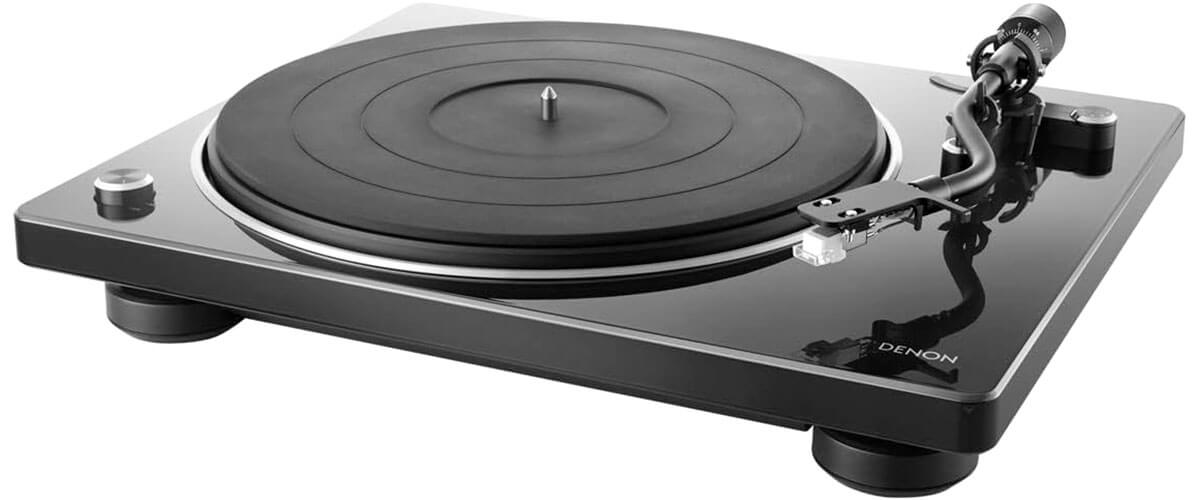 In my opinion, the Denon turntable looks simply gorgeous. The model is available in two colors, and the black version comes with a blacked-out dust cover. This design detail shouldn't have been the most important, although the purity of the records and the turntable itself are, of course, important. But it has become so in discussions among customers. The whole point is that its unusual design catches the eye but completely crosses out the direct purpose. When the dust cover is closed, it doesn't cover the entire perimeter of the deck, and the glossy surface (already subject to quick contamination from fingerprints) gets dusty. Plus, you must remove it completely during operation and put it in a safe place if possible. I pushed it a couple of times and nearly broke it during testing. All in all, it is a questionable design decision from Denon.
Otherwise, the Denon DP-400 has good potential. The chassis is thin, but it weighs 12.4 pounds. That's not a lot, but the turntable resists vibrations well, mostly due to the rubberized insulation of the feet. The only things on the top panel are the shifter (3 of them here) and the S-shaped tonearm. The shifter is large, and I could avoid touching the deck surface when switching, which I really liked, considering the glossy finish. This fact is also nice because the belt is hidden under the platter, and you don't have to take it off every time to change speeds. The tonearm is well-balanced, and its shape is the most optimal for sound reproduction. The vibration resistance and tonearm are exactly what I call a good potential for any turntable.
In my opinion, the Denon turntable looks simply gorgeous. The model is available in two colors, and the black version comes with a blacked-out dust cover. This design detail shouldn't have been the most important, although the purity of the records and the turntable itself are, of course, important. But it has become so in discussions among customers. The whole point is that its unusual design catches the eye but completely crosses out the direct purpose. When the dust cover is closed, it doesn't cover the entire perimeter of the deck, and the glossy surface (already subject to quick contamination from fingerprints) gets dusty. Plus, you must remove it completely during operation and put it in a safe place if possible. I pushed it a couple of times and nearly broke it during testing. All in all, it is a questionable design decision from Denon.
Otherwise, the Denon DP-400 has good potential. The chassis is thin, but it weighs 12.4 pounds. That's not a lot, but the turntable resists vibrations well, mostly due to the rubberized insulation of the feet. The only things on the top panel are the shifter (3 of them here) and the S-shaped tonearm. The shifter is large, and I could avoid touching the deck surface when switching, which I really liked, considering the glossy finish. This fact is also nice because the belt is hidden under the platter, and you don't have to take it off every time to change speeds. The tonearm is well-balanced, and its shape is the most optimal for sound reproduction. The vibration resistance and tonearm are exactly what I call a good potential for any turntable.
Features
Functionality-wise, I see good potential too. The DP-400 has a built-in DSN-85 stylus cartridge. But to be honest, it's not very good. However, you can replace it with another one. I installed Ortofon MM cartridges on it, but there is an option to install audiophile-grade MCs. Isn't that wonderful? Since this model is a semi-auto control, you should have expected the auto-lift function here. It works very well, and the record stops when the playback is complete (which is not a common occurrence). A direct current motor is built in, but there's an AC adapter for hobbyists. It controls the record accurately and supports playback at 33 1/3, 45, and 78 rpm thanks to the built-in autoencoder. The phono stage is also built-in, so you just take the turntable out of the box for a couple of minutes and are ready to listen to records. I will tell you how DP-400 sounds. However, it is better to hear it once than to read about it 100 times.Sound
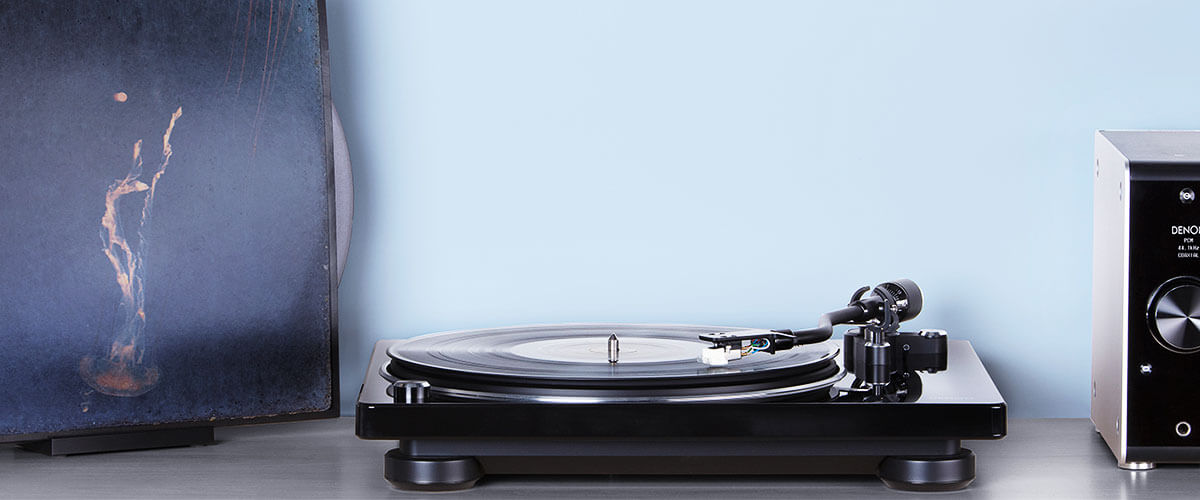 When I took it out of the box and turned it on, I thought I would be disappointed. My favorite '70s records (Fleetwood Mac, David Bowie) sounded dull but not lifeless. Still, the warmth and authenticity inherent in Denon in all their products is very fitting for vinyl. Dynamics is also observed following the idea of the authors of the works, but I lacked volume and brightness of details. And the tops sounded too harsh.
When connecting an external amplifier and replacing the cartridge, the Denon DP-400 played with all the colors, expanding the soundstage and giving dense bass and rich, thin tops. Dispersion occurred better, more accurately layering the tracks properly.
When I took it out of the box and turned it on, I thought I would be disappointed. My favorite '70s records (Fleetwood Mac, David Bowie) sounded dull but not lifeless. Still, the warmth and authenticity inherent in Denon in all their products is very fitting for vinyl. Dynamics is also observed following the idea of the authors of the works, but I lacked volume and brightness of details. And the tops sounded too harsh.
When connecting an external amplifier and replacing the cartridge, the Denon DP-400 played with all the colors, expanding the soundstage and giving dense bass and rich, thin tops. Dispersion occurred better, more accurately layering the tracks properly.
Key specs
- Drive type: belt.
- Operation type: semi-automatic.
- Speeds, RPM: 33 1/3, 45, 78.
- Phono Pre-Amp: yes.
- Speakers: no.
- Bluetooth: no.
- USB: no.
- Aux input: no.
This model is more similar to Technics SL-1500C, both in appearance and in that it has 3 speeds of plate rotation and a built-in phono stage. The more interesting thing is that the price of Denon DP-400 is in the under $500 segment, which makes it attractive for many users with not-so-refined hearing as fans of more expensive brands.
It is also a semi-automatic record player with a tonearm lift and motor stop function, a built-in preamplifier, and an S-shaped tonearm. A single knob switches speeds here. But its weight (and consequently its resistance to anti-vibration) is inferior to the previous models. The cartridge is also factory-made, from Denon. Although the brand knows a lot about music, and I can’t say anything frankly bad about it, it still sounds slightly simpler (more flat) than the SL-1500C. Also, I’m not too fond of the original protective cover, which is completely useless in its purpose – all dust has full access to the turntable parts.
How does a semi-automatic turntable differ from a manual turntable?
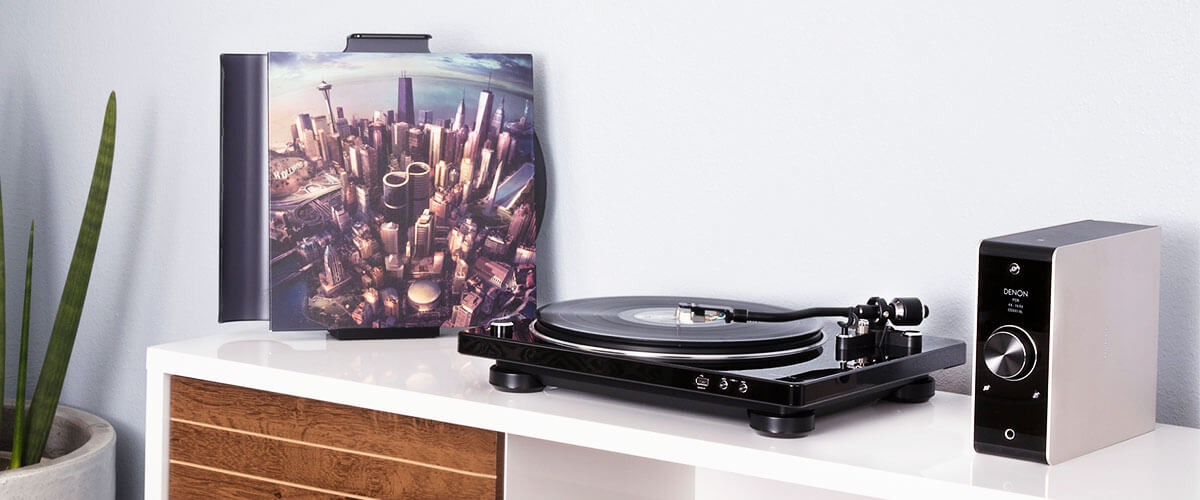
The main difference between semi-automatic and manual turntables is that the tonearm automatically lifts up when the record is finished. Sometimes, the tonearm may return to its place, and the motor will also stop, but this depends on the model. This functionality helps keep the record from being damaged by the needle if you forget or cannot remove it in time.
Completely manual turntables are considered professional. They require experience in placing the needle on the record and removing it to avoid damaging the vinyl record. You must also put the tonearm in place and stop the motor. Switching speeds to play records involves removing the platter, reinstalling the belt, and returning the disk. But these are the traditions of analog sound and are aspired to by those who want to be called audiophiles.
What is the auto-return function on some semi-automatic turntables?
The auto-return function on some semi-automatic turntables raises the tone arm, keeping the record from further contact with the needle and returning it to its place. This is very convenient; you don’t have to stand next to the vinyl player waiting for the song to finish.
Do not confuse it with auto-stop. In this case, the motor stops, but the needle remains on the platter.
Are semi-automatic turntables good for beginners just starting out with vinyl?
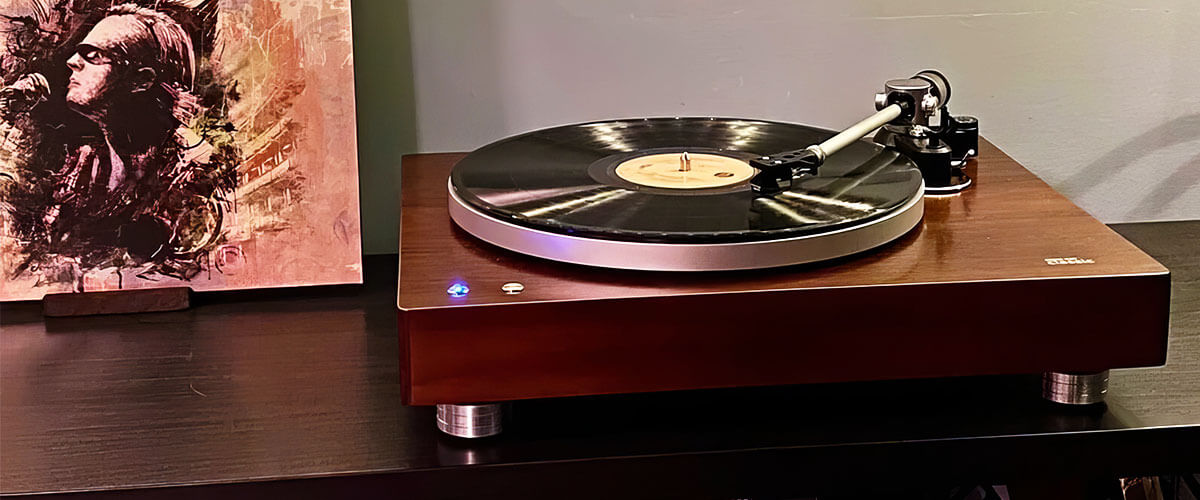
Yes, semi-automatic turntables are good for beginners just starting with vinyl. Manual operation implies experience not only with the turntable but also with the records. They quickly lose their properties if poorly maintained, and you end up hearing songs with distortion.
Semi-automatic turntables raise the tone arm themselves when the record is finished, so you don’t have to keep track of the running time. And so you’ll be sure the needle doesn’t continue to scratch the surface of your records idly.
Placing the needle on the record also requires a lot of care and skill. But this is about fully automatic turntables. Still, vinyl is a tradition, so learning how to handle it correctly is necessary.
We are supported by our audience. When you purchase through links on our site, we may earn an affiliate commission at no extra cost to you.
Our newsletter
* We will never send you spam or share your email with third parties


